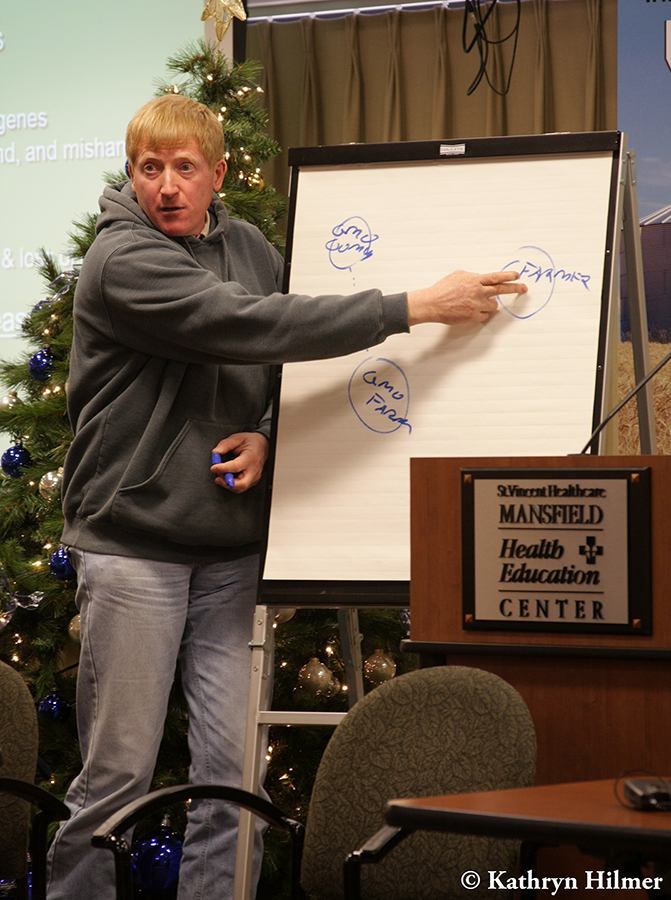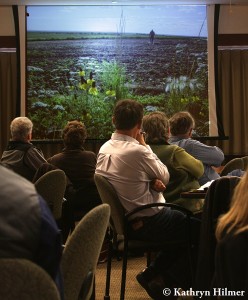
In December, I was fortunate to attend the Montana Organics Association‘s ninth annual conference in Billings. As a delegate of GoodFood World, I sat in on two days worth of lectures, PowerPoint presentations, and open table discussions on a variety of topics that concern Montana’s organic community. As a consumer, this was a rare opportunity for me to witness the larger world behind organic food production and distribution. Even more importantly, I was able to meet many of the individuals who are working hard to who promote real food in our state.
After an introduction on Friday morning by MOA Chair Daryl Lassila, the conference jumped into a discussion on improving access to conservation support for organic farmers. While I often got lost in the technicalities of legal advice, hearing personal accounts from the farmers gave me a new insight and an appreciation for those who produce our food. Doug and Anna Crabtree of Vilicus Farms were open and personable. They promoted connectivity with the land and asserted the belief that organic agriculture, rather than farming that relies on chemical input, should be accredited with the term “conventional,” reminding us that natural methods were the norm long before chemicals came into play (something that consumers and younger generations would do well to remember).
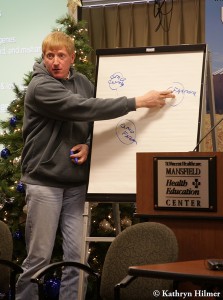
In between the talks I took time to thank my sponsors and meet with the individuals that GoodFood World had mentioned – among them Ole Norgaard, owner of North Frontier Farms near Lewistown, MT and former Chair of MOA. After the first round of legal discussions he let me in on a personal philosophy: “This word organic… is nothing more than a label… some farmers think they can get that stamp and everything is great. We should not be focusing on how to use these programs to make money. It should be about making food nutritional.”
As the conference continued, though, and as I heard more voices from the community, the more I saw that Norgaard wasn’t alone in his thinking. Getting the organic label didn’t seem to be top priority, but it seemed the best place to start as a stepping stone for larger, more encompassing goals. Casey Bailey, who raises wheat and barley outside of Fort Benton, is converting his crops to organic. He spoke about the theological questions that surround his work… Through ventures in religion, philosophy, social work and music, he too developed a sense of connectivity that extends to the land he’s farming today. It involves a desire to be free, as he put it, “from chemicals, from subsidies, and from guilt.”
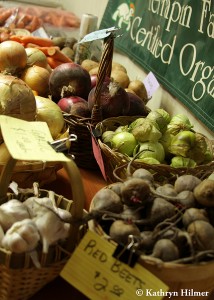
According to Bob Quinn, president of Kamut International and owner of Quinn Farm and Ranch, this type of thinking is exactly what we need to solve problems of food; not only in Montana, but worldwide. Chemical farming systems, he said, are non-sustainable and only exist with government subsidies, yet they are quickly taking over the world’s food supply. Organic farming system are our last best hope, or as he put it, “the only thing standing in the way.”
In the face of this opposition, Quinn asked us all to make the hard choices, beginning with supporting organic farmers and bringing organic production back home. In Montana, this could mean reaching out to new communities. There are many Hutterite colonies here that are farming conventionally and possess the land and the manpower to farm on a large scale. Potential farmland might also be found on the Reservations, where the introduction of organic agriculture would likely provide much-needed jobs, a better diet, and opportunities for education.
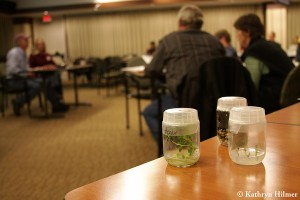
In other areas of the state, educations in agriculture are well underway. At Montana State University, students in the Department of Agriculture program are researching sustainable food systems and conducting studies on the nutritional value of organic food vs. conventionally grown. In the past few years, MSU has seen a significant increase in the number of agriculture students, an encouraging trend that will hopefully continue and serve as a model for other universities.
These newcomers beginning careers in agriculture are forced to find alternatives for knowledge that in the past was largely passed down through the family. The MOA conference also proved to be a valuable resource of advice for those who are new to the business, providing many opportunities for more experienced farmers to give advice, from pest control to the use of Community Supported Agriculture (CSA) as a business model.
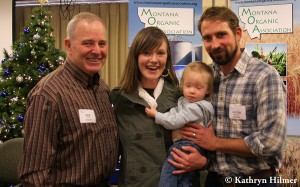
Jacob and Courtney Cowgill have just finished their third year of farming. They run four different CSAs outside of Conrad, MT, distributing organic vegetables, grains, heritage turkeys, and home-baked breads to the community. Being certified organic was important to them from the start, said Courtney, “for our market and our customers, more than just supporting the organic community.”
Still, other farmers have struggled to find success under the organic model. A few of them at the conference vented their frustrations with trying to meet the USDA’s organic certification standards. Patricia Espenscheid from Wholesome Foods spoke about the experience of small farmers seeking certification, calling it “an adversarial relationship.” In the end though, it seemed a small price to pay for the rewards of living their values through their work. Many of the farmers repeatedly expressed a determination and a passion for their cause. As Espenscheid put it, “When you’re making good food, it’s a marvelous way to spend your life.”
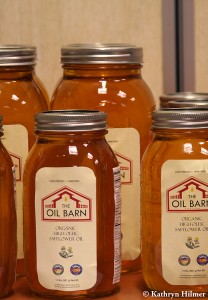
Attending the conference had given me insight into the family-like community that exists around organics in Montana, and it had given me an idea of where I might fit into the equation. Everyone I met was connected to each other… farmers, processors, certifiers, researchers, retailers, and policy experts.
As the only one there who was a consumer – and a professional cook – I had been standing a space apart from all of them. My coming to the conference was a small step in creating new connections and bridging that gap, and it began with a personal choice to set priorities; to actively seek out real food and to support the people who make real food possible. If those choices continue to be made on an individual level, organic communities could be a powerful force for change throughout Montana and across the globe.

